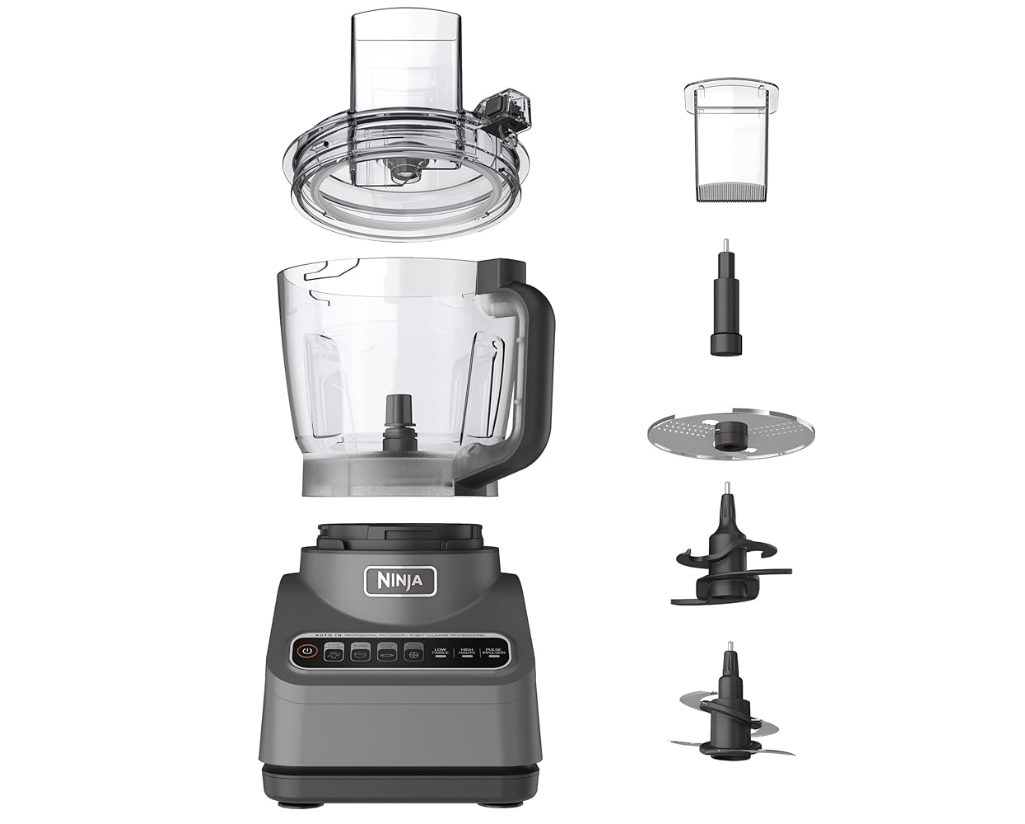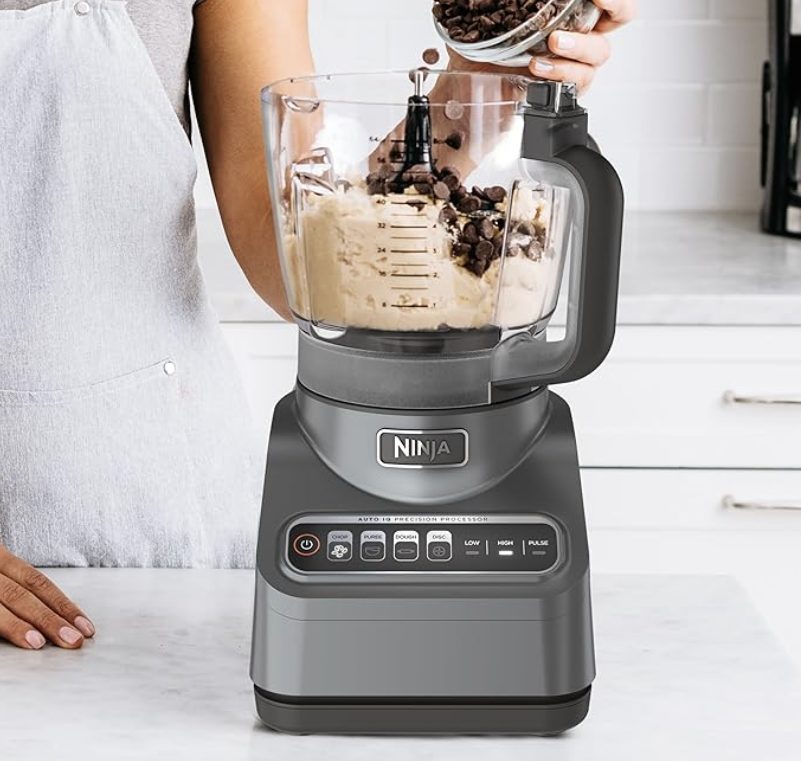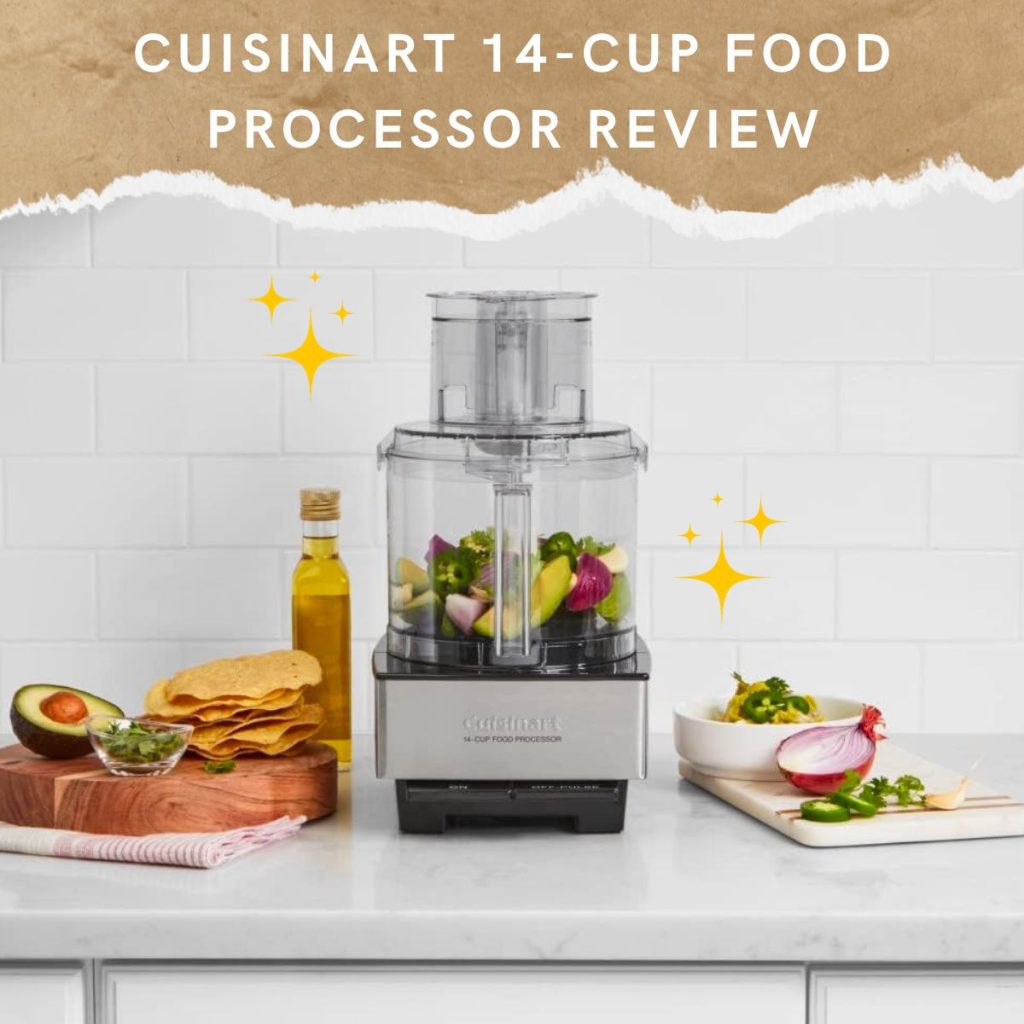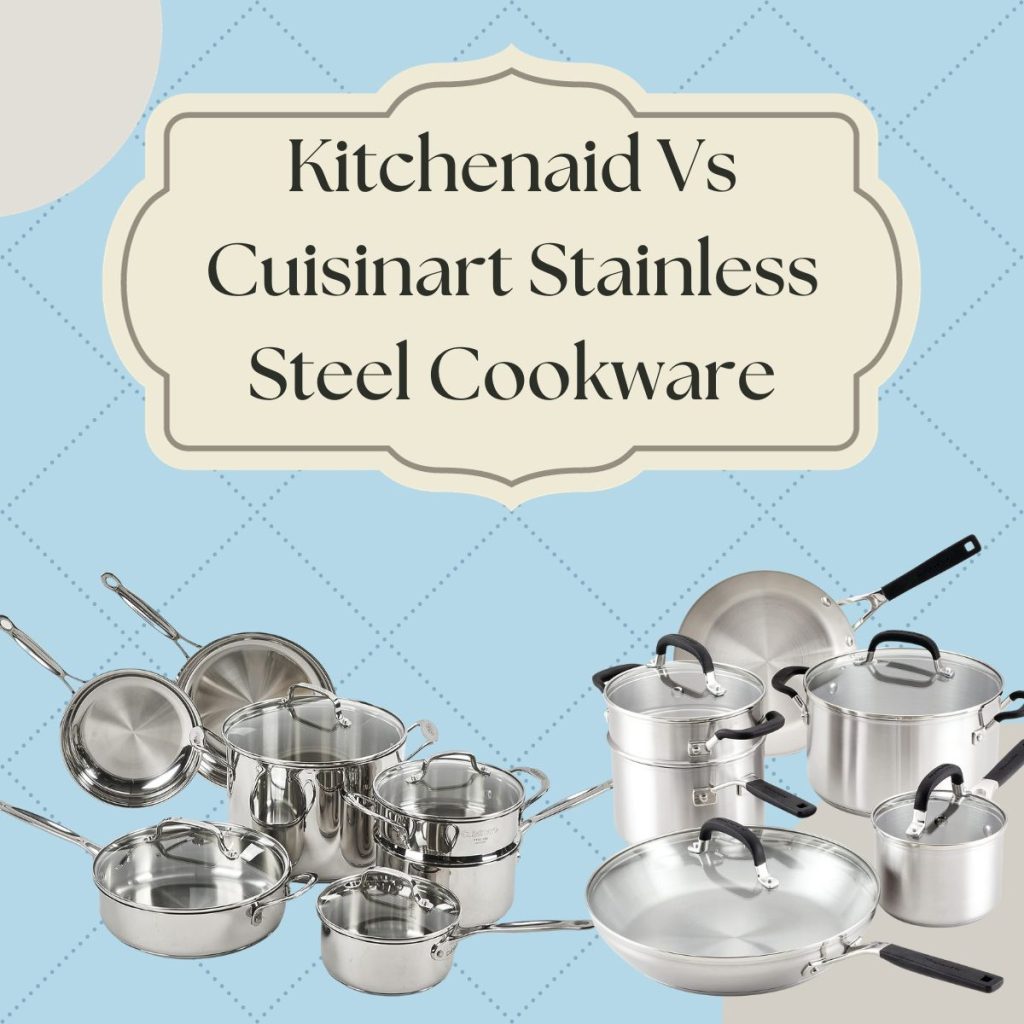Are you in the market for a new food processor? Don’t know the difference with Cuisinart vs Ninja Food Processor? Look no further!
In this article, we’ll compare the Cuisinart and Ninja food processors, exploring their noise level, speed, size, cleaning time, chopping blade design, and overall performance.
By examining these factors, you’ll have all the information you need to make an informed decision based on your specific needs and preferences.
So, let’s dive in and find your perfect kitchen companion!
Key Takeaways
- Cuisinart is quieter than Hamilton Beach, making it worth the extra money.
- Both Cuisinart and Ninja food processors are efficient and quick, according to positive reviews and YouTube videos.
- Despite size differences, both Cuisinart and Ninja food processors perform well.
- Cleaning can be a frustration for both Cuisinart and Ninja food processors, according to user reviews on Amazon and YouTube.

Cuisinart Food Processor: Overview
If you’re considering a Cuisinart food processor, here’s an overview of what you can expect.
The Cuisinart food processor is known for its quiet operation compared to other brands, such as Hamilton Beach.
Decibel readings show that the Cuisinart operates at a low of 83 and a high of 86, while the Hamilton Beach operates at a low of 98 and a high of 100. This significant difference in noise level makes the Cuisinart worth the extra money. Reviews on Target and Amazon also highlight the noise reduction feature of the Cuisinart.
 Cuisinart 8 Cup Food Processor FP-8SV
Cuisinart 8 Cup Food Processor FP-8SV - The 350-watt motor provides efficient processing power for a variety of tasks.
- The inclusion of medium to fine slicing discs offers versatility in food preparation.
- Adequate capacity for processing ingredients, suitable for medium-sized batches.
- Cuisinart is known for its durable and reliable kitchen appliances, ensuring long-lasting performance.
- The food processor has a relatively compact design, saving counter space in your kitchen.
- Simple controls make it user-friendly, suitable for both beginners and experienced cooks.
- While 350 watts is suitable for many tasks, some users may find it less powerful compared to higher-end models for more demanding processing.
- Not Ideal for Large Batches
- Limited Attachments
- Manual Adjustments
- The processor's construction is primarily plastic, which may be less durable than models with more metal components.
The Cuisinart model has a brushed stainless steel finish with white highlights and a compact size. It measures less than 8 inches in width and 14.8 inches in height, with simple controls that have only two visible paddles.
On the other hand, the Ninja food processor has a more traditional appearance with a dark silver tint and larger proportions, measuring over 10 inches wide and 15.6 inches tall.

Ninja Food Processor: Overview
Let’s take a closer look at the Ninja Food Processor and its features.
The Ninja Food Processor is a versatile kitchen appliance that offers efficient and quick food processing. It has a 9 cup capacity and is equipped with a powerful 1000-watt motor, allowing it to process up to 9 cups of ingredients at once.
 Ninja BN601 Professional Plus Food Processor
Ninja BN601 Professional Plus Food Processor - The 1000 peak watts motor provides high-performance processing for a variety of tasks.
- Offers four functions - chopping, slicing, pureeing, and dough making, providing versatility in the kitchen.
- Large Capacity
- Comes with three blades for various tasks, enhancing its capability to handle different food preparation needs.
- The inclusion of a food chute and pusher facilitates easy and safe feeding of ingredients into the processor.
- Sturdy Construction
- Sleek Design
- The larger capacity and powerful motor may make this food processor bulkier, potentially requiring more counter or storage space.
- High-powered motors can sometimes result in a noisier operation, which may be a consideration for those sensitive to noise.
- Complexity for Simple Tasks
- With multiple functions and blades, there could be a learning curve for users new to food processors.
- The advanced features and higher power may come with a higher price tag compared to simpler models.
The processor offers four different settings – chop, puree, dough, and disc for shredding – giving you the flexibility to handle a variety of tasks. It also comes with two blades and one disc for slicing, shredding, and chopping, providing versatility in your food preparation.
The Ninja Food Processor has a more traditional appearance with a dark silver tint and larger proportions compared to the Cuisinart model.

Design and Features
When it comes to design and features, both the Cuisinart and Ninja food processors have their own unique qualities.
The aesthetics and appearance of the Cuisinart model are highlighted by its brushed stainless steel finish and compact size, while the Ninja processor has a more traditional appearance with a dark silver tint and larger proportions.
In terms of control options and settings, the Ninja offers a broader variety of speed settings and pre-programmed options, allowing for precise regulation of blending or processing speed, while the Cuisinart offers several speed choices but fewer pre-programmed settings, requiring manual adjustment and monitoring.
Both models come with versatile blades and additional features and accessories, making them suitable for various chopping, slicing, and shredding tasks.
Aesthetics and Appearance
When considering the aesthetics and appearance of the Cuisinart vs Ninja food processors, it’s important to note the design and features of each model.
The Cuisinart model has a brushed stainless steel finish with white highlights, giving it a sleek and modern look. It has a compact size with a width of less than 8 inches and a height of 14.8 inches. The controls are simple, with only two visible paddles.
On the other hand, the Ninja food processor has a more traditional appearance with a dark silver tint. It has larger proportions, measuring over 10 inches wide and 15.6 inches tall. The design of both models is functional and user-friendly.
Transitioning to the next section, let’s now discuss the control options and settings of these food processors.
Control Options and Settings
To delve into the control options and settings (design and features) of the Cuisinart vs Ninja food processors, consider the functionality and user-friendly interfaces of both models.
The Ninja food processor offers a broad variety of speed settings and pre-programmed options, allowing for precise regulation of blending or processing speed. It provides a range of control options to suit different needs.
On the other hand, the Cuisinart food processor offers several speed choices, but fewer pre-programmed settings. It requires manual adjustment and monitoring during blending or processing. The control options are more straightforward and may appeal to those who prefer a simpler interface.
Now, let’s move on to the next section and explore the blade versatility and functions of these food processors.
Blade Versatility and Functions
For optimal blade versatility and functionality in your food processor, consider the design and features of both the Cuisinart and Ninja models. When comparing the two, here are some key points to consider:
Blade Design:
- Cuisinart: Comes with a single blade for chopping and mixing tasks.
- Ninja: Includes two blades and one disc for slicing, shredding, and chopping. Blades and discs can be used in different directions for versatility.
Additional Features:
- Cuisinart: Offers two discs for slicing and shredding, along with a complimentary spatula and recipe book.
- Ninja: Comes with two blades and one disc, providing slicing, shredding, and chopping options. Also includes a complimentary spatula and recipe book.
Both models offer a range of blade options and additional features to enhance your food processing experience. Now, let’s dive into the next section to explore additional features and accessories.

Konnichiwa! (Hello!) I'm Pat Tokuyama, a Japanese tofu cookbook author, who travels for music, food, and adventure. If you like Japanese tea, checkout some of the newestorganic japanese tea, matcha bowls and noren and more!
** Curious about the Plant Based Japanese Cooking Club? ** Learn more here!
Additional Features and Accessories
You’ll find a variety of additional features and accessories in both the Cuisinart and Ninja food processors, enhancing their design and functionality.
The Cuisinart model has a brushed stainless steel finish with white highlights, giving it a sleek and modern look. It has a compact size, measuring less than 8 inches wide and 14.8 inches tall, making it suitable for smaller kitchens. The controls are simple, with only two visible paddles.
On the other hand, the Ninja food processor has a more traditional appearance with a dark silver tint. It’s larger, with dimensions of over 10 inches wide and 15.6 inches tall.
Both models come with additional accessories such as blades and discs for slicing, shredding, and chopping. They also include a complimentary spatula and recipe book, adding value to the overall package.

Performance Comparison
When comparing the performance of the Cuisinart and Ninja food processors, one notable difference is their processing capacity.
- Cuisinart can handle up to 14 cups of ingredients, allowing for larger batches of food to be processed at once. This is ideal for those who often cook for a large number of people or like to meal prep.
- Ninja, on the other hand, can process up to 9 cups of ingredients at once. While it has a slightly smaller capacity, it still offers a decent amount of processing power for most home cooks.
Both food processors have their strengths and it ultimately depends on your specific needs and preferences.
Next, we’ll move on to the value comparison between the Cuisinart and Ninja food processors.
Value Comparison
To determine the value of each food processor, consider the price, features, and performance of both the Cuisinart and Ninja models. Here is a comparison table highlighting the key aspects of each processor:
| Aspect | Cuisinart | Ninja |
|---|---|---|
| Price | Mid-range | Mid-range |
| Features | Single blade, two discs, complimentary spatula | Two blades, one disc, complimentary spatula |
| Performance | Can handle up to 14 cups of ingredients | Can process up to 9 cups of ingredients |
| Control and Speed | Several speed choices, fewer pre-programmed options | Broad variety of speed settings, pre-programmed options |
| Warranty and Usability | User-friendly interface, suitable for amateur chefs | User-friendly interface, suitable for amateur chefs |
Both the Cuisinart and Ninja food processors offer similar value in terms of price, features, and usability. The Cuisinart model has a larger capacity and comes with additional discs for slicing and shredding. On the other hand, the Ninja processor offers more control options and pre-programmed settings. Consider your specific needs and preferences when making a decision.

Cuisinart Vs Ninja Food Processor: The Verdict
Now let’s delve into the ultimate decision between the Cuisinart and Ninja food processors. Here are the key factors to consider:
- Performance:
- Ninja can process up to 9 cups of ingredients at once, with a powerful 1000-watt motor.
- Cuisinart can handle up to 14 cups of ingredients, with an extra-large feed tube for convenience.
- Control and Speed Options:
- Ninja offers a wide variety of speed settings and pre-programmed options for precise regulation.
- Cuisinart offers several speed choices but fewer pre-programmed settings, requiring manual adjustment and monitoring.
Both models have their strengths and weaknesses, so it ultimately comes down to personal preference and priorities. Consider factors like size, noise level, cleaning time, chopping blade convenience, design, and warranty coverage to make an informed decision.







Konnichiwa! (Hello!) I'm Pat Tokuyama, a Japanese tofu cookbook author, who travels for music, food, and adventure. If you like Japanese tea, checkout some of the newestorganic japanese tea, matcha bowls and noren and more!
** Curious about the Plant Based Japanese Cooking Club? ** Learn more here!